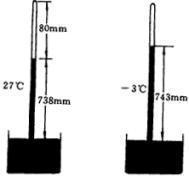Standard gas state and formula synthesis (1)
Standard gas standard state A standard gas is a state of matter. A gas is a fluid like a liquid: it flows and deforms. Unlike liquids, gases can be compressed. If there is no limit (container or force field), a gas can be diffused and its volume is not limited. Standard gases The atoms or molecules of a gaseous substance can move freely with each other. The atoms or molecules of gaseous substances have higher kinetic energy.
A standard gas is a real gas and an ideal gas.
Standard of ideal gas is assumed as there is no interaction force between gas molecules, gas molecules without their own volume, when the actual gas pressure is not large, the average distance between molecules is large, the volume of a gas molecule itself negligible, temperature is not low, lead to the average molecular kinetic energy is larger, the molecular attraction between compared with negligible, the behavior of real gas is very near to the behavior of an ideal gas, can be treated as ideal gas processing.
All the contents discussed below are ideal gases, but it should not be forgotten that there is a difference between real gases and ideal gases. The conclusions obtained by discussing ideal gases are only applicable to real gases with low pressure and temperature.
Overview of Ideal Gas
① Standard gas ideal gas equation PV =nRT
It is a basic characteristic of an ideal gas that a standard gas follows the ideal gas state equation. There are four variables in the equation of state of an ideal gas -- pressure P of the gas, volume V of the gas, number of moles of the gas N, temperature T and a constant (often R for the gas). As long as three of the variables are determined, an ideal gas is in one state, so the equation is called the equation of state of an ideal gas. Standard molar ratio of gas temperature T and n is the unit of fixed, K and mol, respectively, and the gas pressure p and determining the volume V unit has a variety of, at this point, the state equation of constant value of R (including units) with changes, in the operation, must pay attention to the correct access standard state standard gas R value is a state of matter. A gas is a fluid like a liquid: it flows and deforms. Unlike liquids, gases can be compressed. If there is no limit (container or force field), a gas can be diffused and its volume is not limited. Standard gases The atoms or molecules of a gaseous substance can move freely with each other. The atoms or molecules of gaseous substances have higher kinetic energy.





 Facebook
Facebook YouTube
YouTube LinkedIn
LinkedIn Twitter
Twitter